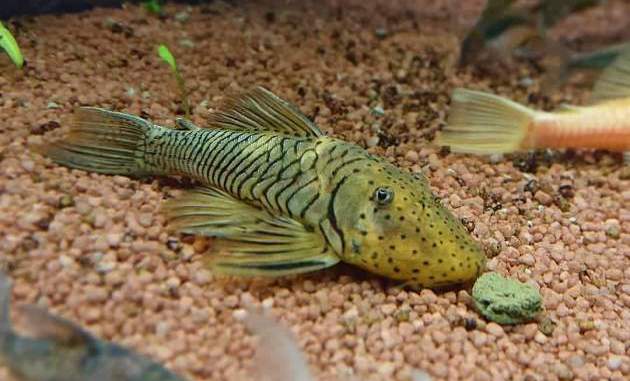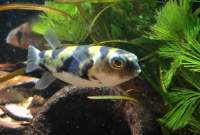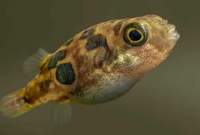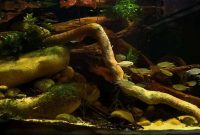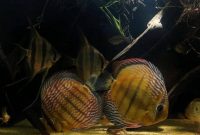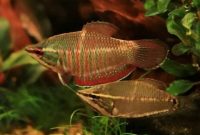Feel confused about choosing what kind of algae remover crew looks more fresh and unfamiliar in the aquarium hobbies? Why do you not try to keep a ‘Bulldog Pleco’? They are a rare suckermouth armored catfish. They may show a new atmosphere that makes you more interested in them.
With the label, “rare” is certainly pricier and needs more effort to get them as your pets. And because they are great fish, you particularly need the best guide on proper care for these high valued catfish.
Look no further; we have summarized best practices for the care of your bulldog plecos, including habitat and water parameters, feeding, breeding, tankmates, and other important information that is useful for the keepers.
TABLE OF CONTENTS
Bulldog Pleco Facts & Overview
- Scientific Name: Chaetostoma Formosae
- Care Level: Intermediate
- Originate: Columbia
- Size : Up to 10.5 Cm
- Life Expectancy: Up to 10 years
- Diet: Algae Eater, Omnivore
- Temperament: Peaceful
- Minimum Tank Size: 30 gallons
- Temperature: 20-24°C
- pH Level: 6.5-7.8
- Hardness: 143-447 ppm
- Breeding: Cave Spawner
- Compatible For Beginners: No
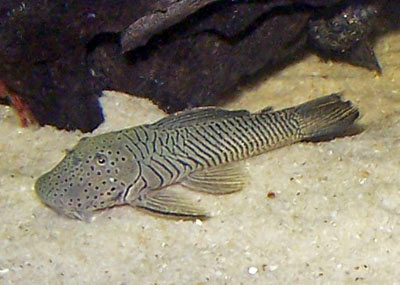
General Information Of Bulldog Pleco
Chaetostoma formosae is an algae cleaner catfish under the family Loricariidae. These tropical fish were first described scientifically by Gustavo A. Ballen in 2011; they are endemic to Colombia.
Chaetostoma consists of two Greek words, ‘chaite’ means hair, and stoma means mouth. While the species name ‘Formosae’ took from an adjective in genitive case that was deriving from the Latin word ‘Formosa.’ That name was used to honor his sister, Laura María Ballen, in tribute to her support and unconditional love for him.
They have many common names that use universally by many aquarists, including bulldog pleco, blonde bulldog pleco, blonde rubber pleco, striped bulldog pleco, striped rubber pleco, striped rubber nose pleco, widemouth pleco, rubber pleco, rubber lip pleco, L187B, L444, L146, L146a, they also have some Denmark’s names such as smuk gumminæse and smuk gumminæse-sugemalle.
Bulldog pleco’s name has long been misapplied to chaetostoma thomsoni or chaetostoma thomasi (thomasi plecos) and chaetostoma milesi for a long time. However, each of them is different species with distinction originating location.
Unfortunately, this ray-finned fish type has been listed as vulnerable by IUCN since 2020 due to some human activities.
Distribution And Habitat
Bulldog pleco is native to South America and is only known live around western piedmont streams of the upper Guaviare and río Meta basins. These tributaries are parts of the Casanare and Meta departments, eastern Colombia. Both Guaviare and Meta streams are parts of major tributaries of the río Orinoco.
Most type locality of these catfish is from Caño Chuy, río Upía that located in Boyacá – Casanare border, Orinoco drainage, upper río Meta basin, and San Luis de Gaceno.
Almost all bulldog plecos that become an inhabitant in the aquarist’s tank are collected from the streams around Villavicencio city in the Meta department and exported to most regions worldwide.
In the shipment process, it reasonably often contains chaetostoma dorsale in the same package. Maybe their appearance looks almost similar, and for an ordinary person hard to distinguish both of these species.
In their habitat, bulldog pleco prefers to live in fast-flowing headwater streams, sometimes with high gradients, and also found in minor tributaries. The water temperature is typically cool.
The substrate in these water bodies normally consists of bedrock with scattered jumbles of stones and boulders. While at the river bank, there is commonly submerged vegetation or leaf litter. However, real aquatic plants are not arising due to strong water movement.
The water in their places is typically clear and rich with oxygen, which facilitates the biofilms to develop well. But sometimes, the water volume, hydrochemical composition, and turbidity can change abruptly because of daily rainfall.
Appearance Of Bulldog Pleco
Actually, distinguishing each species under the genus chaetostoma is slightly hard to identify. However, there are general rules for any species categorized as a chaetostoma family; they have spines behind the gill cover called interopercular odontodes, no plates on their abdomen, and they do not have plates on the snout edge.
There are two particular marks to help identify the bulldog pleco (C. formosae); they have many black dots on their head and black stripes on the edge of their body plates.
Their bodies are pretty flat, with their base body color in grey or pale olive green with a large head. Their fins’ color is translucent; this part contains spikes and becomes thick when unflared.
C. formosae has a mouth that is suction-cup-like; it allows these fish to cling firmly to any different surface types and nibble the algae.
The scaly armors with small spines cover their bodies entirely. The female’s body size is smaller rather than the male’s, where the female usually is about 7 cm, and the male can reach up to 10.5 cm when growing in nature.
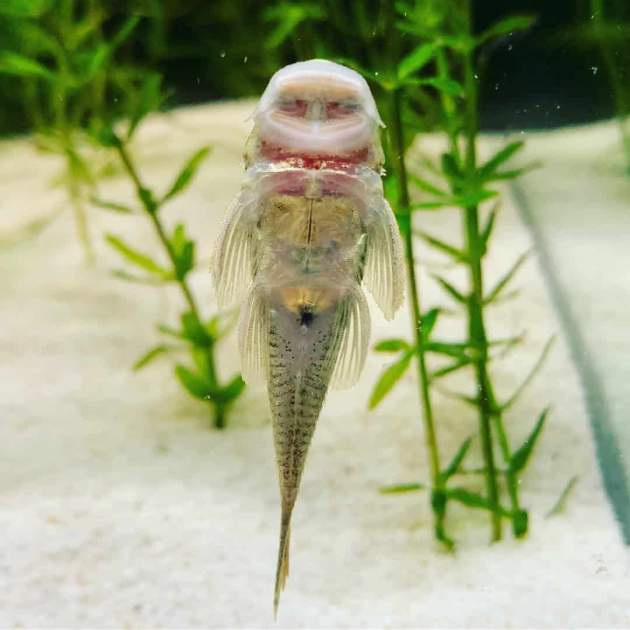
Behavior And Temperaments
The bulldog pleco is a peaceful catfish type, but sometimes they can be slightly territorial with their own species or other similarly-shaped fishes. They grow best when kept in a dedicated species tank, solo, or live with one or two groups of schooling fish from the cyprinids or characins families.
To avoid the aggressive habit toward the species in the community tank, especially if you keep them with other loricariids, ensure enough tank size and build some hiding places inside.
Some aquarists tell us they tend to be active at night time (nocturnal) rather than daylight and prefer to spend most of their time sitting around the decorations such as bogwood. However, no research study confirms this habit yet.
Sexual Dimorphism
They are pretty dominant in the sexual differences. The male’s head is usually broader and larger than the female’s. The ventral sides of males are slimmer, and the size of pelvic fins is not proportional.
The larger and longer pelvic fins probably have a significant impact during the insemination of the eggs. This part can hold up the sperm cells from the water movement, making them not be carried away too rapidly by the current. Bulldog pleco is doing this by inverting the pelvic fins over the clutch of eggs.
A fundamental difference between the sex is males more colorful. An adult male has an enlarged second unbranched anal-fin ray bearing two different posterior dermal folds. It may reach the base of the caudal fins when an individual fully matures.
The male also generates a fleshy bump at the dorsal surface of the first pectoral-fin ray, which is a mark that is not present on female bodies.
Both sexes have a convex distal margin on their pelvic fins, which is rounded in females, while males are angular.
Males grow a few rows of acute, hypertrophied, and recurved odontotes that bulge on the dorsal surface skins of the pelvic fins rays. But the females’ odontotes are perceptible but do not penetrate the skins.
Reproduction
Most of the mating process still occurs in the wild; only a few report it happens in captivity. So this information still does not reliable yet.
According to information from some sites, spawning occurs inside a cave or shelter. Females deposit the eggs on the cave’s roof, and males will take care of them.
Feeding And Diet
Algae are their main diet in nature, but they also feed on some live organisms such as insect larvae, small crustaceans, etc.
In the aquarium environments, they can accept some dried food that you can buy in stores, including algae-based wafers and sinking pellets.
Like other suckermouth catfish, striped bulldog pleco is willing to eat some blanched or fresh vegetables and fruits, like spinach, cucumber, zucchini, shelled peas, lettuces, and chopped fruits.
To enhance their colorations which makes them look more beautiful inside the tank, you can add some tiny live or frozen food such as artemia, bloodworms, and daphnia alongside the dense fresh algae. They most prefer to feed on green algae types such as:
- Green dust alga
- Oedogonium alga
- Rhizoclonium alga
- Cladophora alga
- Fuzz alga
- Green spots alga
- Spirogyra alga
The existence of algae is necessary for chaetostoma formorsae. If you keep them in a community tank with some herbivores, alga may disappear quickly.
Well, producing your own algae on the rock surface in a separate aquarium is a favorable solution. Do not require big containers; only need high lighting and sunny climates, which you can maintain outdoors. After that, change the rocks from the main aquarium with those from the nursery tank on a cyclical basis.
Tank Requirements And Aquarium Setup
At least you need a 30-gallon aquarium size for occupying by a single fish or a small group that consists of 2-3 individuals.
There is no rule for base substrate type; you can use sand, gravel, or a mixture of both. Some instruments that are preferable to placing in their tank are pebbles that vary in size and a layer of water-worn stones.
The old driftwoods are optional as additional hardscape; utilization of the new ones should be avoided. It can release tannins that can turn the watercolor darker, decreasing the effectiveness of artificial lighting.
You should provide high dissolved oxygen contents in the water at all times. We advised using a high-pressure and good-quality filter system, for example, the high-quality canister filter with additional airstones, wave maker, or powerheads.
A water cycle of about 10-15 times aquarium volume per hour is suggested, although a lower rate of around 5-10 times per hour still serves as sufficient oxygen level for them.
Even though the aquatic plants are not a feature of their natural habitat, leastwise, they can promote the oxygen rate, regardless of their role as decorations. Select the robust plants with thicker leaves, stems, and roots which can survive in their tank condition. Some hardier genera like anubias, microsorum, and crinum are the best choice.
Anubias genus is more beneficial because algae tend to grow on their leaves and provide some shelter areas for the animals hiding.
Set the lighting at the medium to a strong level to attract the algae spores and other related microorganisms to develop; about 9-12 hours per day is enough. It is actually not something must you can do; in fact, the bulldog pleco does not need a certain light intensity, which means they can tolerate any lighting level.
It does not require a heater in this setup; remember, they mainly inhabit mountain streams which is the water that locations are relatively cold.
Adding other artificial decorations, such as caves, pots, pipes, plastic plants, etc., is optional depending on your desire as much as fit with your tank size.

Maintenance And Care
Every freshwater aquarium needs maintenance periodically in order to keep every element inside balanced, including the bulldog pleco tank too, which requires a specific condition.
Moreover, they only accept stable water conditions, well, never added them into the newest tank setup, where the environment is immature.
Regular water change between 30 – 50% once a week is necessary; it helps to stabilize the water quality.
The rest of the planted aquarium can leave without too many changes or cleaning; it aims to permit the algae to develop, except for the viewing wall.
Make sure to check the water quality regularly; the parameters should be in:
- Temperature Level: 20-24 Degree Celcius
- pH Level: 6.5-7.8
- Water Hardness: 143-447 ppm
Under the perfect living tank configuration, their expected age can reach ten years. However, if your setup is not eligible for what is needed, do not wish they live as long as you want.
Tankmates
As mentioned above, they are peaceful and slightly active like other plecostomus, which can be put with other fish that have similar behavior.
Avoid keeping them with larger, aggressive, territorial, or even predator species such as flowerhorn and Oscar fish. It will suffer them and might shorter their age.
The fish-like guppy, molly, and other related should not be kept together with them due to the possibility of scrambling to eat the algae inside the aquarium. However, since you give them enough food, it still can be permitted.
Of course, other algae eaters species such as CAE, zebra snails, nerite snails, apple snails, Amano shrimps, freshwater dwarf shrimps, and other related species do not be added.
Adding one or two assassin snails is good; they can eradicate snail pests such as Malaysian trumpet snails, tadpoles, and ramshorn snails that usually thrive well in the aquascape.
Some tankmates that are suitable for them are:
- Dwarf Gourami
- Honey Gourami
- Discus
- Angelfish
- Pea Puffer
- Amazon Pufferfish
- Tetra Species
- Cherry Barb
Diseases
Since this article was published, we still do not find any credible sources confirming if stripped bulldog pleco has a species disease. Nevertheless, a few of the usual freshwater aquarium fish sicknesses can still affect them, including ich, dropsy, bacterial and fungus infections, and hole in the head.
Availability
Due to fish that offer in the trade being wild cathed type, makes the stock in the market is quite rare. Their prices vary depending on the size and quality. A cheaper cost for an individual with 3-5 cm in length is $20; we think this rate is compatible with their availability and fantastic appearance.
Is Stripped Bulldog Pleco Suitable For Beginners?
The answer is “No”; it is hard for newbies to keep them in the aquaria due to their special requirements. We recommend keeping a common pleco that is sold in aquatic shops. These types are hardier, do not have a certain condition, and definitely are inexpensive.

